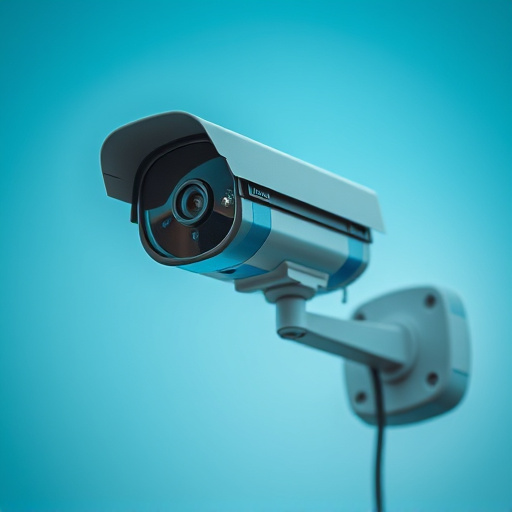Fake security cameras, often using Infrared (IR) LED technology, mimic genuine systems but lack advanced features. Improper height placement can weaken their deterrent effect, especially in outdoor areas with obstructions. Optimal placement involves mounting cameras slightly elevated to cover wide angles and capture clear images using IR sensors. Identifying fake cameras through odd heights or inconsistent placements is crucial for effective security. Regular inspection and professional consultation are recommended. Responsible Fake Security Camera Height Placement respects privacy while deterring crime without infringing on civil liberties. Strategically placed infrared sensors and LED lights offer innovative visual deterrents, enhancing peace of mind.
“Uncover the secrets behind the seemingly innocuous ‘Fake Security Camera Infrared Sensor LED’—a technology that could be compromising your security. This comprehensive guide delves into the intricate world of these mimic devices, exploring their impact on modern surveillance systems. We uncover common placement errors and their consequences, providing insights to identify fraudulent sensors. Additionally, legal aspects and ethical considerations are discussed, along with alternative solutions for enhanced home or business security, emphasizing optimal Fake Security Camera Height Placement.”
- Understanding Fake Security Camera Infrared Sensor LED Technology
- Common Placement Mistakes and Their Impact on Security
- How to Identify Fake Sensors in Your Security System
- Exploring Legal and Ethical Implications of Using Fake Cameras
- Alternative Solutions for Effective Home or Business Security
Understanding Fake Security Camera Infrared Sensor LED Technology
Fake security cameras often employ Infrared (IR) Sensor LED technology as a key component in their design, mimicking real security systems to deceive potential intruders. Understanding this technology is crucial when it comes to identifying these fakes, especially considering their strategic fake security camera height placement.
These IR LEDs are strategically placed to mimic the look and feel of genuine security cameras. They emit infrared light, invisible to the naked eye, which helps in night vision and motion detection. However, compared to authentic systems, these fake sensors often lack advanced features like adjustable IR intensity and accurate motion sensitivity. This can be a telltale sign when evaluating fake security camera height placement and overall quality.
Common Placement Mistakes and Their Impact on Security
Many homeowners and business owners install security cameras with the belief that a visible presence can deter crime. However, one common mistake is improper height placement, often due to incorrect calculations or overlooking specific areas. Typically, mounting a fake security camera too low can lead to poor field coverage, missing crucial angles, and reduced effectiveness as a deterrent. This is especially true for outdoor installations where tall structures, trees, or other obstacles might obstruct the camera’s view.
The impact of such mistakes can be significant. Criminals may spot these flaws and exploit them, making it easier to break in or carry out illicit activities unnoticed. Conversely, strategically placing fake security cameras at optimal heights—often slightly elevated and covering wide angles—can enhance overall security by ensuring every corner is under surveillance, even in low-light conditions, thanks to infrared sensors.
How to Identify Fake Sensors in Your Security System
Identifying fake sensors in your security system is crucial for maintaining effective home protection. One common red flag is the fake security camera height placement. Legitimate security cameras are strategically placed at a suitable height, often slightly elevated, to capture clear footage of entry points and suspicious activities. If you notice any cameras installed too low or in obvious positions that wouldn’t provide adequate coverage, it might be a sign of deception.
Furthermore, check for inconsistent sensor placements. Professional security systems typically follow a structured layout, ensuring comprehensive monitoring. Randomly placed sensors or groups of cameras clustered together could indicate an attempt to mimic a genuine system while lacking the necessary comprehensive coverage. Regularly inspect your security setup and consider consulting with a professional to ensure the integrity of your home protection measures.
Exploring Legal and Ethical Implications of Using Fake Cameras
The proliferation of fake security cameras, often disguised as genuine models, raises significant legal and ethical concerns, especially regarding privacy and potential misuse. These replicas, with their infrared LED features, can be easily installed in public spaces or private properties, posing challenges for authorities and individuals alike. The issue of Fake Security Camera Height Placement is a crucial aspect that demands attention; incorrect positioning may lead to false accusations or fail to deter actual crimes due to poor visibility.
Ethically, the use of fake cameras could infringe upon civil liberties and privacy rights. While security measures are essential, there must be a balance to prevent surveillance overreach. Legal frameworks need to adapt to address these new technologies, ensuring that the implementation of security systems respects individual freedoms and adheres to legal boundaries.
Alternative Solutions for Effective Home or Business Security
In the realm of home and business security, visual deterrents play a significant role. While a well-placed fake camera can be an effective strategy, it’s essential to explore alternative solutions for comprehensive security. One innovative approach is to utilize hidden infrared sensors and LED lights strategically. These devices mimic the presence of a surveillance system without the visible camera, making them ideal for discreetly enhancing security.
For optimal results, consider the Fake Security Camera Height Placement. By positioning these sensors at varying heights, you can create an illusion of a more robust security setup. This tactic not only prevents potential intruders but also acts as a powerful deterrent, ensuring peace of mind for property owners.
In conclusion, while fake camera infrared sensor LEDs may seem like an attractive option, it’s crucial to understand their limitations and potential risks. By recognizing common placement mistakes, learning to identify fake sensors, and considering the legal and ethical implications, you can ensure a secure environment for your home or business. Opting for genuine security cameras with strategic, height-considerate placement remains the best defense against unauthorized access and crime. Always prioritize the integrity of your security system for optimal protection.
